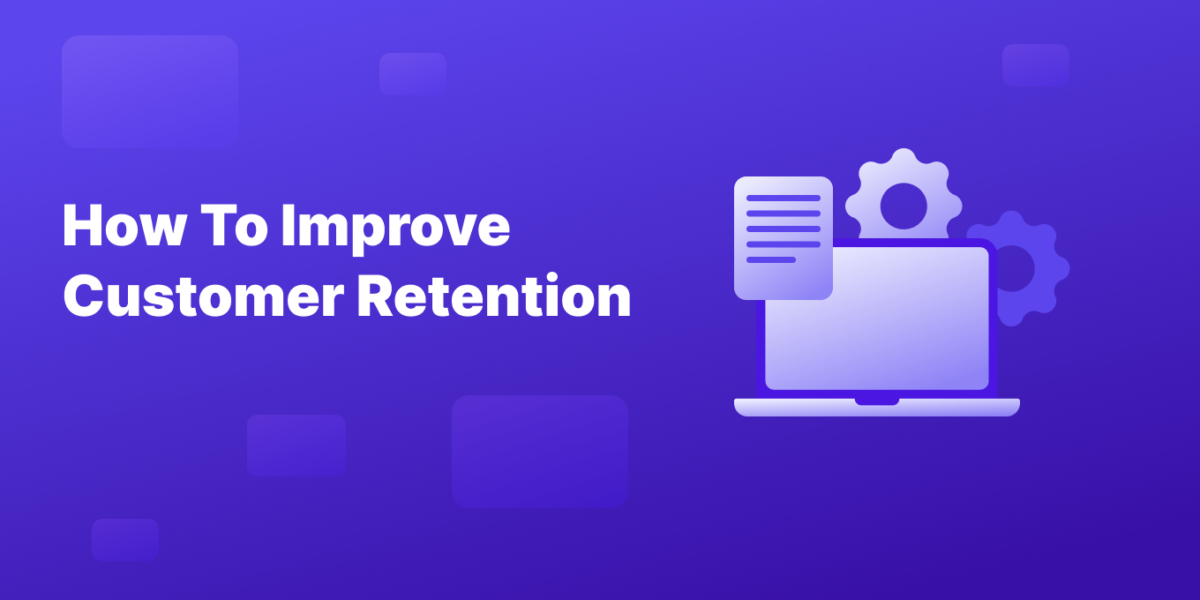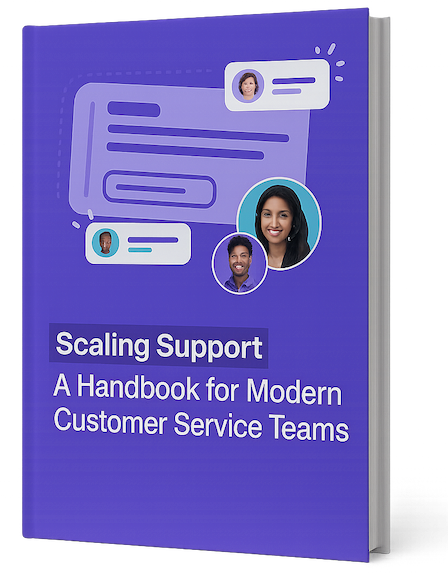What’s better than acquiring new customers? Simple: being able to retain current ones.
It costs more to attract new customers than to keep existing ones. If your business is continually facing an exodus of customers, over time it will be unsustainable and you will have to keep throwing ads and marketing money to reduce churn.
In this guide, we discuss the importance of customer retention, as well as strategies for keeping your customer base intact and loyal.
What is Customer Retention?
Customer retention is the ability of a brand or business to retain customers and increase repeat business.
A high customer retention means that customers continue to patronize the brand instead of going over to competitors. On the other hand, poor customer retention means the business is continuously losing clients, and consequently, needs to keep attracting new ones.
Since acquiring new customers costs more, this leads to higher expenses and lost opportunities for cross-selling or upselling.
The Importance of Customer Retention
Customer retention is critical for the following reasons:
Repeat business is more profitable
Repeat customers have a higher customer lifetime value or CLV, which is the measure of how much they might spend on your business during their lifetime. In some industries, repeat customers can account for over 65% of the profits, compared to just 35% for new customers.
In fact, a Harvard Business School study found that just a 5% improvement in customer retention can yield a dramatic increase in profit between 25% to as much as 95%.
It costs more to replace them
It costs 5% more to acquire a new customer than to keep an existing one. And even when you acquire new customers, it can cost up to 16x more to bring them to the same level of your long-time customers.
Loyal customers spend more
On average, an existing customer is almost 25% more likely to spend on your business than a new shopper. Additionally, the longer they stay, the more they spend: repeat customers can spend over 65% more after 3 years.
They can turn into brand advocates
A customer that stays with your business can turn into a brand ambassador. In the age of social media and online reviews, word of mouth referrals are priceless, more trusted, and work exponentially. And best of all, they’re free! Optimizing your Instagram account can be a powerful tool in nurturing these brand ambassadors, as it provides a platform for them to share their positive experiences and recommendations, ultimately helping you gain followers and further amplify your brand’s reach through their authentic endorsements.
Who is Responsible for Customer Retention?
It’s a common misconception that the responsibility for customer retention lies with your customer support team. While customer support is valuable for keeping customers satisfied, they only come into play when the customer has a question or issue. In other words, customer support is limited to the post-transaction phase.
- Empower your customer service team with a knowledge base
Customer retention is actually the domain of the customer success manager. This is because customer success looks at the entire customer journey, rather than just providing support in case of complaints or issues. The customer success manager takes a proactive approach in keeping existing customers happy through various customer retention strategies, which we will discuss below.
Measuring Customer Retention: Key Metrics
Customer retention rate
There are several ways to measure customer retention. The key one is customer retention rate (CRR), which is the percentage of customers that your business has kept over a specified period of time.
CRR is calculated by subtracting new customers from the total number of remaining customers at the end of the period. The percentage is derived by dividing that number with the total number of customers at the start of the period, and multiplying it by 100.
(Customers remaining - new customers) / Total customers at the start x 100
= Customer retention rate
Customer Churn
This refers to the percentage of customers who abandon your brand. This can be someone who switched brands, someone who decided not to renew, or someone who dropped your products.
Customer retention rate is commonly confused with churn rate. CRR refers to the percentage of customers who are retained, while churn rate refers to customers who stop doing business with you.
While churn can never be fully eliminated, an attrition rate that is greater than 5% may be cause for concern. To determine your churn rate, subtract the remaining customers at the end of the period from the total number of customers at the start, and divide that number by the total number of customers at the start of the period.
(Customers at the start - customers remaining) / Total customers at the start
= Churn rate
Repeat Purchase Ratio
This is the percentage of customers who return to buy from your business again. The RPR is a solid indicator of customer loyalty, and also a measure of customer satisfaction. It can also be used to drill down the specific demographics of repeat customers, so you can adjust your product offerings, marketing and advertising accordingly.
The repeat purchase ratio is determined by dividing the number of repeat customers with the total number of customers for the period.
Number of returning customers / Total number of customers
= Repeat purchase ratio
Product Return Rate
This measures the percentage of sold products that are returned. Since it applies to tangle products, it is not applicable for services or subscriptions. Consumer return rates typically range from 10% to 20%. They can serve as indicators of the quality of your product lines, logistics, or your after sales service.
Number of sold products returned / Total number of products sold during the period
= Product return rate
Time Between Purchases
This is the time it takes for the average customer to buy from you again. It serves as indicators of customer satisfaction, product or service quality, and other factors like promotions.
To determine the rate, it’s necessary to keep track of purchase dates for all customers and identify the average purchase rate.
Total number of individual purchase rates / Number of repeat customers
= Time between purchases
Loyal customer rate
These are the customers who made a repeat purchase within a given period. It identifies your most loyal customers, which you can then use to hone your customer success strategy, provide targeted offers or discounts, or roll out a customer rewards program.
You can also tap them for customer satisfaction surveys, or solicit reviews and testimonials and become brand advocates.
Number of repeat customers / Total number customers for the period
= Loyal customer rate
5 Ways to Improve Customer Retention
Here are some practical tips and strategies to boost your customer retention rate and build a loyal customer base for the long term.
1. Improve your customer care service
Good customer care is the foundation of retention. Anyone who calls your customer service almost always has an issue or negative experience, and it’s the job of customer care not only to resolve the problem, but to leave the customer feeling satisfied to want to do repeat business again. Make sure your team possesses the necessary customer service skills to deliver stellar support.
2. Increase your customer support channels
Nowadays, just having a customer hotline no longer cuts it. To make sure clients can reach you on a variety of channels, you need to broaden your customer support avenues.
Implement additional channels like email support and live chat for customers who prefer written communication. To cut down on cost and automate processes, consider a chatbot or customer knowledge base to enable users to solve light issues on their own, improve response times, and reduce workload for your CS team.
Finally, make sure you have a social media presence and an active response on private messages and DM inquiries.
3. Reward loyal customers
A customer rewards program can go a long way in turning one-time shoppers into repeat buyers. Incentivize loyal customers with rewards, discounts or exclusive offers. This not only encourages further business, it can also increase the purchase quantity and frequency of transactions.
4. Start a referral program
Consumers are more likely to trust word of mouth than most other types of marketing. Turn customers into brand ambassadors by implementing a referral program. It motivates clients to earn points and rewards, while increasing the likelihood of new customers thanks to trusted referrers and the bonus for signing up.
5. Put a personalized touch
Beyond the quality of your products, what influences customers to stay is the customer experience. One of the best ways to boost your retention rate is by providing a personalized customer experience.
Use targeted emails specifically designed for loyal customers, such as on birthdays and holidays. Ask them for their feedback to show how their response matters. A customer success manager working in tandem with sales, marketing and customer service can do wonders for personalizing the customer journey.
Conclusion
In an era of increased competition, online reviews and convenient at-home shopping, establishing a loyal customer base is more crucial than ever.
By improving your customer retention, you not only increase the customer’s lifetime value, you build lifetime loyalty and turn your most valuable customers into the best ambassadors of your brand, much better and more trusted than any sales and marketing will ever be.


